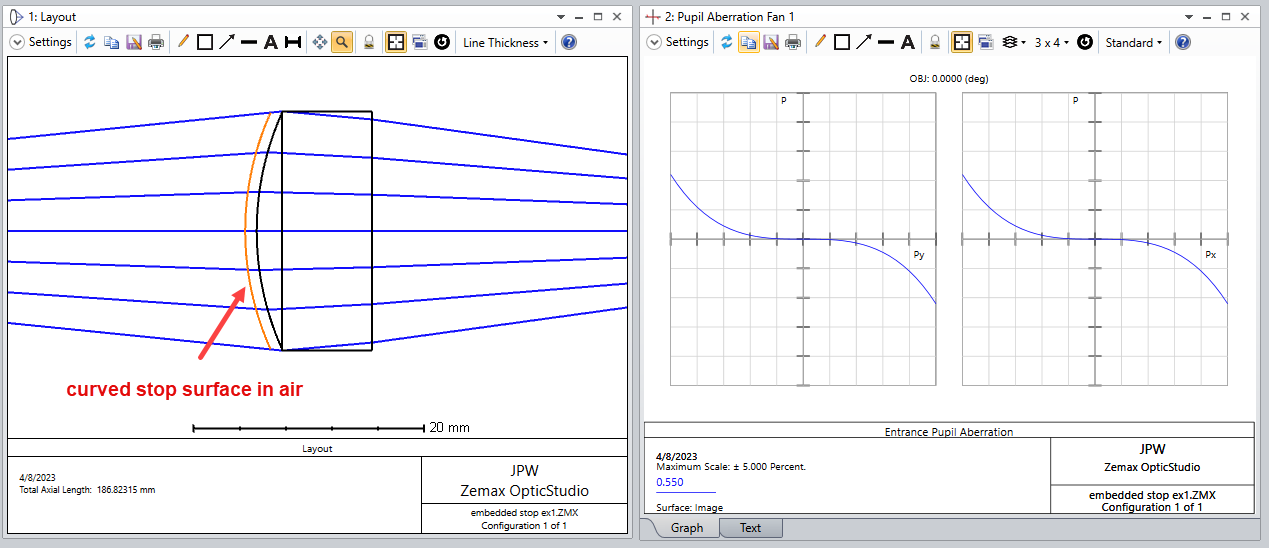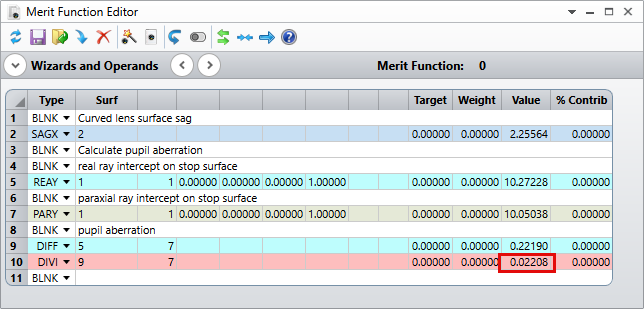Hello,
I have a question regarding Zemax sequential plot “Pupil Aberration Fan”.
a).If I take an on axis field point and a plano-convex lens (plane surface = incident surface = stop) this plot does not show any pupil aberration.
b).If I take the same setup and the same lens, but now with the convex surface as incident surface (=stop), the pupil aberration fan shows pupil aberration.
I do not understand this. From my understanding pupil aberration fan compares the normalized pupil coordinates of a ray passing the physical stop with the normalized coordinates of this ray in the entrance pupil (which is an image of the physical stop).
In both cases a) and b) the stop (=lens diameter) is also the entrance pupil. So there should be no pupil aberration. Can you help me to understand this?
Thanks in advance
Dirk












